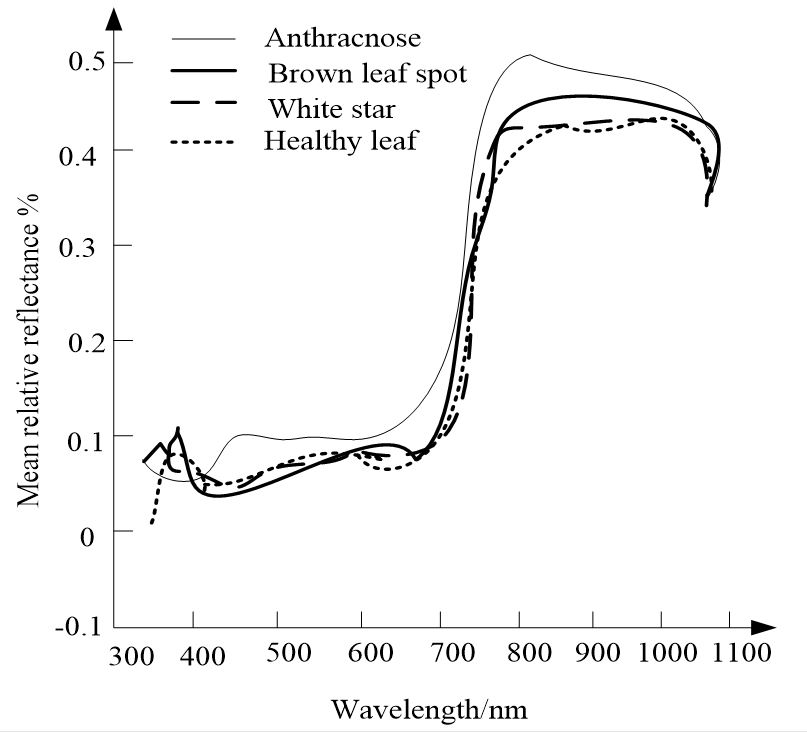
Objective: adaptation of tea disease spot recognition method based on image feature points extraction and matching, can achieve fast and accurate recognition of tea disease spot, and provide reference for remote sensing disease monitoring with plant protection UAV at low altitude. Methods: hyperspectral imaging technology and image processing technology are used to collect hyperspectral images of 4 kinds of samples, such as anthracnose, brown leaf spot disease, tea white star and healthy leaf, and the extracted spectral reflectance of sensitive waveband of interest region is regarded as spectral feature. Twice principal component analysis is performed to obtain the second principal component image after the second principal component analysis as the feature image. Computer processing technology and pattern recognition technology are utilized to analyze characteristic parameters of tea disease spot, like color, shape and texture. On the basis of the feature that tone of tea disease spot in HSI (hue-saturation-intensity) color space is different. H component image is employed to extract tea disease spot, so as to get the tea disease spot image. n total, 12 colors parameters, 11 shape parameters and 8 texture parameters of each disease spot region are extracted. 20 feature parameters of strong classification ability are selected using variance and principal component analysis method to form classification eigenvectors. 35 eigenvectors of tea non-disease spot and 35 eigenvectors of tea disease spot tea are randomly selected to compose the training set. Fischer discriminant function is utilized for accurate recognition of tea disease spot based on the training set. Results: information of disease spot of the leaves with different types of disease has obvious features in the PC2 image. The features of PC2 image is regarded as the feature image for disease spot extraction later. The segmentation effect of anthracnose and tea white star is better. Images of disease spot region of different types before and after segmentation are obtained. The correct recognition rate of tea disease test set is 90%, and the correct recognition rate of non-disease test set is 95%. Conclusion: the proposed method can accurately identify tea disease spot, and provide technical support for monitoring the disease of tea at low altitude.
Total file downloads: 4